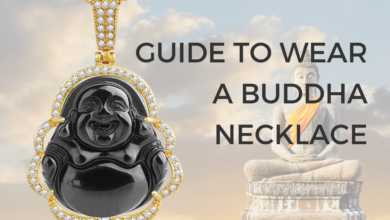How to Write a “Scientific Article” for University?

It is essential to do undergraduate or graduate studies abroad, especially if you want academic recognition by publishing your authorship and completing a final research paper. But beyond your final thesis, if you want to obtain prestige in the academic world of research, it is of utmost importance the realization of a “Scientific Article” or “Scientific Paper” in which you contribute your research and results as a new knowledge for the development of science; which could give you a competitive advantage at the time of your application to enter a university abroad.
What is a scientific article?

A scientific article is an original report that presents and describes experimental results, new knowledge, or experiences based on known facts. Its purpose is to be able to share and contrast these results with the rest of the scientific community and, once validated, to be incorporated as a bibliographic resource available to interested parties.
What are their characteristics?

• They refer to a scientific problem.
• The results must be valid and reliable (they do not necessarily have to be experimental, they can also be theoretical).
• They are original: each article communicates the research results for the first time.
• They are presented in scientific journals, conferences, and other forms of presentation.
• They usually occupy an average of 4-5 pages of a journal (12-page double-spaced manuscripts). They are accompanied by graphs, tables, and occasionally photographs and drawings.
• The number of authors or signatories is usually no more than six, with the first being considered the article’s main author.
• It is a formal, public, controlled, and orderly document.
• It must comply with key writing criteria.
• It must be scientifically rigorous and logical.
• It must be clear and precise. It is necessary to use scientific language and vocabulary.
• It must be brief and concise.
• It must have an adequate style.
• It must be compatible with ethics.
How is it organized?

A scientific article is generally structured as follows:
• Title: it should be short, concise, and clear. It is recommended that it be written after the paper’s core (introduction, material methods, results, and discussion). Titles can be informative or indicative.
• Abstract: this should allow the reader to identify the basic content of the paper. It should consist of 250 words and should be written in the past tense, except for the last paragraph or concluding sentence. It should avoid providing information or conclusions, nor should it cite bibliographical references. The problem to be investigated and its objective should be clear. It should state the main objectives and scope of the research, describe the methodology used, summarize the results and generalize with the main conclusions. On the other hand, the most frequent errors in the writing of the abstract are not clearly stating the question, being too long, or too detailed.
• Introduction: it is the presentation of a question, why this work has been done, and its interest in the scientific context. In addition, it should include previous work on the subject and what aspects are not clear, which constitute the object of the research. The last paragraph of the introduction summarizes the objective of the study.
• Material and methods: this section answers the question of how the study was conducted. The material and methods section is organized into:
1) Design: randomized, controlled, case-control, case-control, clinical trial, prospective, etc.
2) Population: sample and selection criteria
3) Setting: study site
4) Interventions: techniques, measurements, units, pilot tests, apparatus, and technology, etc.
5) Statistical analysis: indicates the statistical methods used and how the data were analyzed.
• Results: presents the tables and figures that clearly express the results of the study carried out by the researcher and should fulfill two functions:
1) To express the results of the experiments described in the Material and Methods.
2) To present the evidence supporting these results.
• Discussion: most readers will go after reading the abstract (although experts recommend that, after reading the title, the first thing to read is the material and methods) and the most complex section to elaborate and organize.
Some suggestions from writers from https://www.wowessays.com/:
– Start the discussion with the answer to the question in the introduction, followed immediately by the evidence set out in the corroborating results.
– Write this section in the present tense (“these data indicate that”) because the paper’s findings are already considered scientific evidence.
– Bring out and comment clearly, instead of hiding the anomalous results, giving them as coherent an explanation as possible, or simply saying that this is what you have found, even if at the moment no explanation can be seen. If the author doesn’t do it, the editor surely will.
– Speculate and theorize with imagination and logic. This may arouse the interest of the readers.
– Include recommendations, if appropriate.
– Above all, avoid drawing more conclusions than your results allow, even if those conclusions are less spectacular than expected or desired.
• Bibliography: it should be cited according to the rules required by the chosen journal or scientific publisher, so the researcher should take different internationally recognized standards into account. The updating of the scientific article will be determined according to the bibliographies consulted, which should ideally be within the last 5 years of publication.
What are the golden rules?

According to www.iprofesional.com, some unspoken precepts make up what any member of the scientific community could qualify as “a good paper.”
On their website, they explain that “In general terms, a paper is rejected because of the research involved, and not because of the style or the characteristics of the genre. But it is also true that difficulties in written communication can lead to the paper being misunderstood”.
According to this page, the first “golden rule” for writing is simplicity because the writing must be transparent so that the reader can interpret the research in a finished way. If the text is obscure, it is difficult to understand what is the empirical basis for it. It may cause that it is not understood and the publication is not approved.
Another tip is to give the document to someone else to read. The text has to be self-contained, and sharing it is a good way to identify segments that are not understood.
Likewise, according to the teacher, a good methodology to achieve this is “write and let it sleep, to take up again with a certain distance what one has written.”



